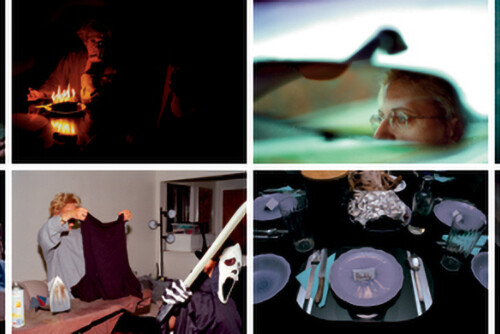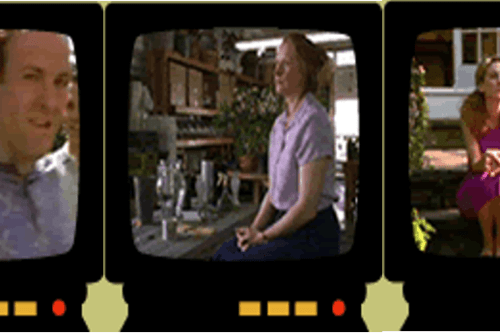“What should have been the happiest day of my life was the worst.”
—Otha, the first woman in the class to give birth, recalling the day of her delivery
How will I tell my child about her birth? Should I tell her I was in prison when she was born and had to go right back there? I did not get to nurse her. Do I tell her I took many deep breaths so I would know her smell? How was my baby ever to know me? Can I ever be a good mother with this hanging over us? These are questions I have heard repeated by every mother who has returned to the prison and the prenatal/post-partum class after childbirth. I am still in contact with many of these mothers, and again and again, the same concerns persist.
Edith, a young, petite white woman, thin with brownish hair and hazel eyes, more reminiscent of a freshman in college than a prisoner, was having her second baby. She was serving time in our state’s only women’s prison, a minimum to maximum security facility, for writing a hot check for around $4,000—her first offense, not simply her first felony. The judge in her trial, who also served as both the juvenile- and the family-court judge for the county, sentenced her to fifteen months, “to make an example.” She had a twelve-month old son and no family members to call upon, save the baby’s paternal grandparents. The judge denied her any visitation whatsoever with her baby, with the exception of so-called “phone visits.” Each collect call she made to the paternal grandparents was denied. She knew she had lost her son. The grandparents eventually acquired permanent guardianship over the child from the same judge, who again prohibited any visitation between the mother and the toddler. But for Edith, who was all the while pregnant with her second child, the struggle had just begun.
Edith was a small woman, and was presumably carrying a small baby. She listened and learned all that she could from the childbirth education. She had no family and was hoping a church group would care for her baby until she was out. One day, I came to class to find her missing; she had gone into labor the evening before. Around 1:30 in the afternoon, before our class had even ended, Edith returned. Just three hours earlier, at 10:30 that morning, she had given birth to a baby boy weighing over nine pounds. I was appalled, and quite physically taken aback, not only by the fact that she was rushed back from the hospital, but by her shocking appearance.
She was ashen and cold, shaking as many new mothers do after delivery. She had given birth to another son. We all laughed and cried together. A group home, funded by the Church of Christ, would be picking her baby up at the hospital within the hour. Edith had not met the church representative, but they had talked on the phone. The home would not involve Child Protective Services, and Edith was assured that she would have her son returned to her once she had been released and had found a place to live. The photographs taken at the hospital showed a beautiful new child. She had other photos taken with the disposable cameras that my program left for the mothers at the hospital. However, she could only keep three photographs at the prison. I recirculated them for her each week. She would not receive additional photos from the caregivers of her baby, nor would there by any visits with the child.
At the following week’s meeting, Edith shared her despair and depression at being separated from her baby. She was also unsure when she would see him again. It was immediately evident that this loss was compounding the loss of her firstborn. The prison permitted her one collect call to the home per week. But that was not real contact. And while photos might have served to lessen this loss and provide some semblance of connection to the child, she still was allowed only three at a time. She carried the three photos of her newborn behind her ID badge at all times.
When she began to describe her labor and delivery to the prenatal/post-partum class, she also shared other past traumas, including her history of childhood sexual abuse. During labor, she was shackled and handcuffed—the standard procedure. Now, a month later, she was in constant pain in her shoulder and back. (In fact, few of the mothers ever received a six-week check-up.) Edith finally arranged an appointment, and there learned she had torn her rotator cuff in the left shoulder, which corresponded to the hand that had been cuffed. She recalled how she shook with cold, and remembered that all she had wanted during labor was to move around. But she had not been permitted to get up. During labor, her arm hurt, sometimes tingling, sometimes cramping. She kept asking to have her arm released. The doctor and other medical staff also asked, but she wasn’t released until she had already entered the final stage of labor and delivery.
When her son was brought to her after delivery, she was again under two-point restraints, her wrist above her head and the opposite ankle shackled to the bed. Not surprisingly, this made holding her baby quite precarious. And since neither family nor friends are allowed to visit new mothers from the prison, Edith was alone with her new son, and fearful of dropping him. She repeatedly asked the officer to release her wrist, suggesting that handcuffing her wrist to the bedrails at waist-level would make her less afraid of dropping her baby. In the class, she reported recurring nightmares where she drops the newborn.
Today, she is reunited with her prison-born son, but never regained custody of her first-born. She calls me sometimes, worried about her lack of emotional connection to this son. She has had a third baby, and compares her feelings of intimacy with the new baby, worried that she and her three-year old son are not adequately attached because of their separation just after birth. The question is a nagging one: Is this child potentially more at-risk for future abuse because of the attachment issue?



